Lithium-ion is all the rage in EVs, but have you heard of sodium-ion batteries? The excitement around this emerging battery chemistry is huge. As with any new energy storage tech, it can be hard to nail down whether it’s a legitimate step toward a sustainable future or just hype. Luckily, sodium ion cells have been commercialized quickly, and regular people can buy them in familiar formats.
As we have our hopped-up Motocompacto lying around, we figured we’d try these new cells to see what they’re good for. Could they match up to the performance of a lithium-ion pack? The answer is pretty interesting.
The Packs
To test this idea out, we decided to make our own battery packs that can accept any variety of 18650-type cells. 18650s, named for their diameter of about 18 millimeters and length of 65 millimeters, are one of the most ubiquitous varieties of batteries available. They’re powerful little cylinders, and our circuit board-based pack can accept 12 of them wired in series. This will give us more than enough voltage to get our Motocompacto up to respectable speeds.
I designed these packs mostly as an experiment. They consist of 12 separate cell holders connected by very heavy copper traces and all of the components come pre-soldered on. Charging and discharging happens through an XT60-type connector, which is common for this sort of application. I’m not sure if they’re gonna work, but they were reasonably cheap to order to my specifications, so I figured why not give them a shot? Worst case scenario: Something catches on fire.
The empty battery pack.
The Cells
In order to do a fair comparison between lithium and sodium-ion cells, I bought both. The Sodium cells were easy enough to find; a reseller called Sriko Batteries sells them online in their own custom wrappers. Their exact origin is unknown to me, however they did come with an OK datasheet. I’ll go into the specifics of these cells in a moment.
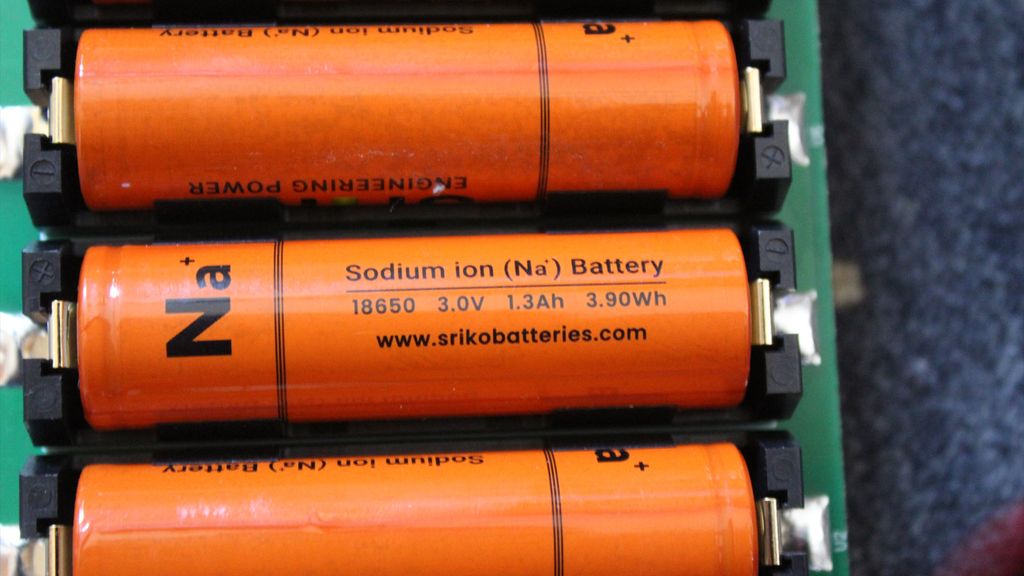
The sodium-ion cells in their bright orange wrappers.
The lithium cells did not come to me so easily. You can easily buy practically new individual cells online—the kids these days call them loosies—from a handful of reputable websites. They just cost a lot of money. People are generally buying them for vapes or flashlights, so getting just two or three at these prices isn’t unreasonable. Getting a dozen costs a lot more.
Luckily, one of my favorite battery resellers had a bunch of good-quality cells for sale in bulk. The only issue was they were in existing enclosures. I bought them, removed them from the enclosures, and had my lithium. They’re Molicel INR-18650As, a quality cell with a high discharge rate. Molicel, for reference, makes the batteries that power the quickest electric car on earth; the McMurtry Spierling. Very reputable.
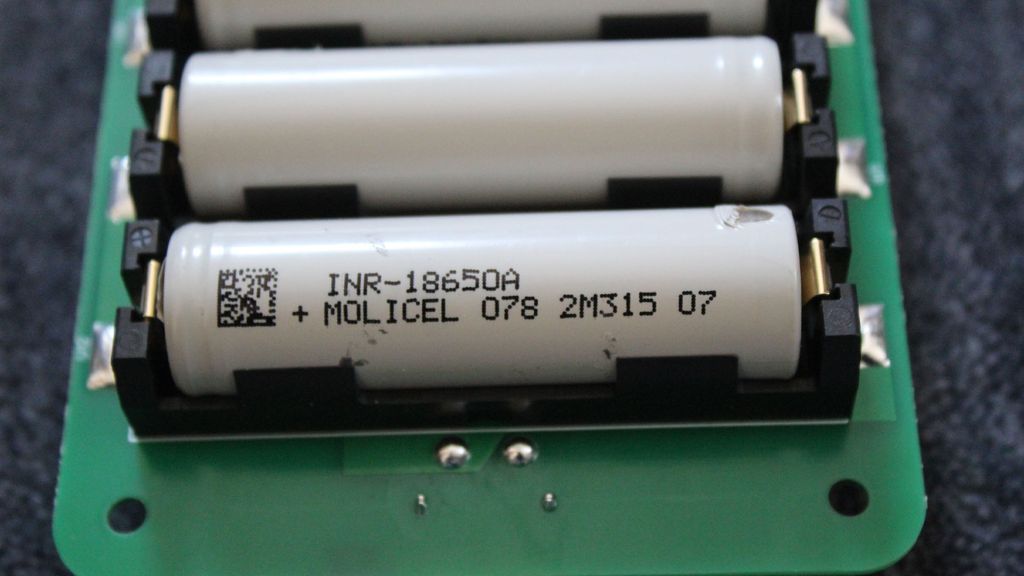
The lithium-ion cells were extracted from existing plastic enclosures.
Comparing the two cells is relatively straightforward. Battery cell capacity is determined by multiplying its rating in amp-hours by its nominal voltage, which is a midpoint between fully charged and fully discharged. The sodium cells operate between 2.0V and 4.0V with a nominal voltage of 3.0V. They are rated at 1.3Ah each, which means each contains 3.9 watt-hours of energy. It’s worth noting that the datasheet says 1.2Ah, while the wrapper says 1.3Ah. I’m feeling optimistic, though.
The lithium cells butcher them badly in terms of capacity and these aren’t even the best 18650s you can buy from Molicel. They are 2.5Ah each, operating between 2.0V and 4.2V (although I only discharge them down to 2.8V). Their nominal capacity is 3.6V. This translates into 9Wh each, which is more than double the sodium cells.
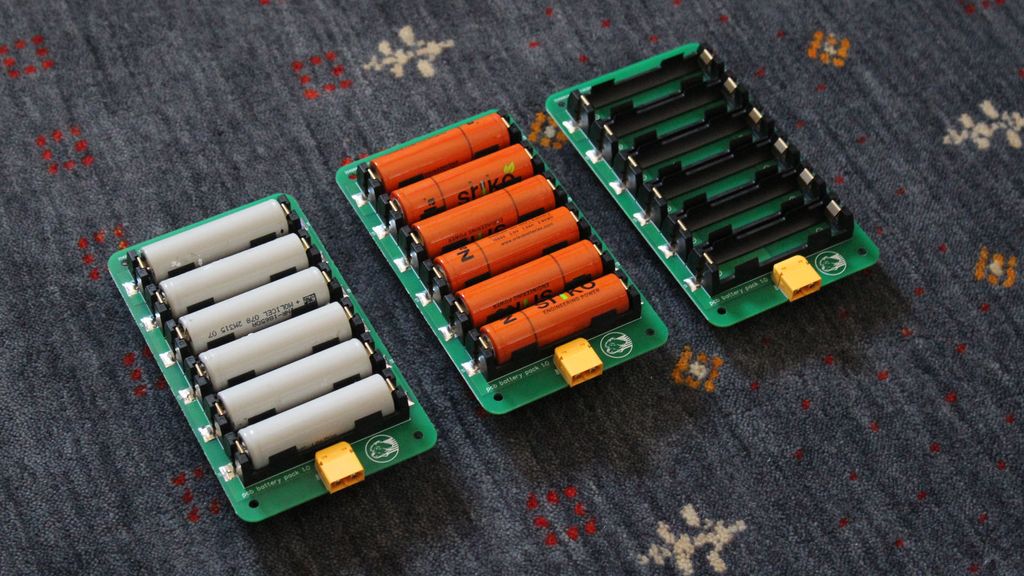
Just look at those guys. Aren’t batteries fun?
So why even buy the sodium cells? It has everything to do with “buy.” Getting a good quality INR-18650A will cost you $4-$6 each if you don’t want to get your hands dirty. For our battery pack that would mean a cost, just in cells, of at least $48. I didn’t pay that, but if I wanted nice clean units without having to tear apart any plastic enclosures, that’s how much it would cost.
The sodium ion cells arrived spotless and charged up, all ready to go. They cost me $1.52 each. This practically makes them disposable, and keep in mind that the company I bought them from is still making money selling them that cheap. This is after they bought them wholesale and re-wrapped all of them. The hype around sodium-ion is about the price and how, with a little improvement, it might be able to challenge lower-end lithium chemistries, like lithium-iron-phosphate. They also just got commercialized in the last few years and they’re already that cheap. Pretty nuts.
Running The Packs
Capacity isn’t everything when it comes to batteries. Cells have a specific energy, sure, but also specific power, i.e., how much current they can discharge.
The sodium cells max out at around 13A continuous discharge but can provide more than that in a short burst—around 25 amps. The lithium cells can put out 20A or more continuously. In other words, the sodium cells have a comparable power density, which again is respectable considering the price, even if the capacity isn’t very good.
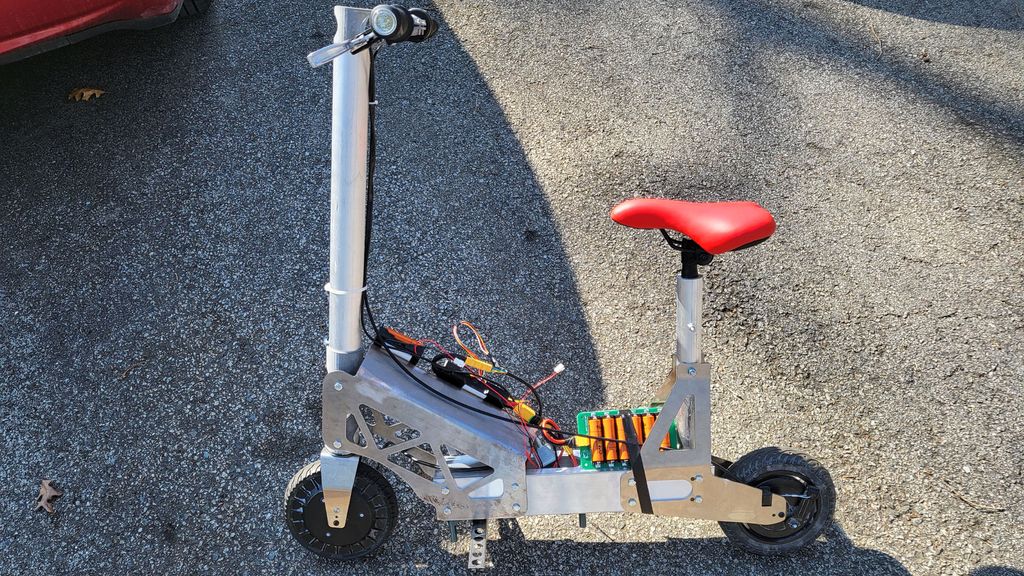
I taped the battery packs to the scooter, sure, but I used electrical tape.
Combining all of these cells into a pack gives us the whole story. The lithium pack contains 108Wh of energy and is capable of providing 864W continuously at nominal voltage, which is great. The sodium pack contains less than half the energy; just 46.8Wh. It can put out 468 watts of energy, though. That’s around half the power, but again the cells are 1/3 or even 1/4 the price. You could buy twice as many cells and wire them in parallel to get the same battery performance for less cost, albeit with a physically larger and heavier pack. You can extrapolate how this might translate into full-sized EVs.
In terms of what these are like to ride with the different packs, the lithium one is much quicker. The sodium cells can provide stock Motocompacto performance, but as you’ve probably read in earlier installments of our series, that isn’t saying much. The Molicel pack allows for almost double the performance of the stock scooter. The lithium cells can also charge a little faster than the sodium cells, which means we can regen harder. These 18650As don’t even have especially good charging performance, either. With a different cell, we could harvest even more energy under braking.
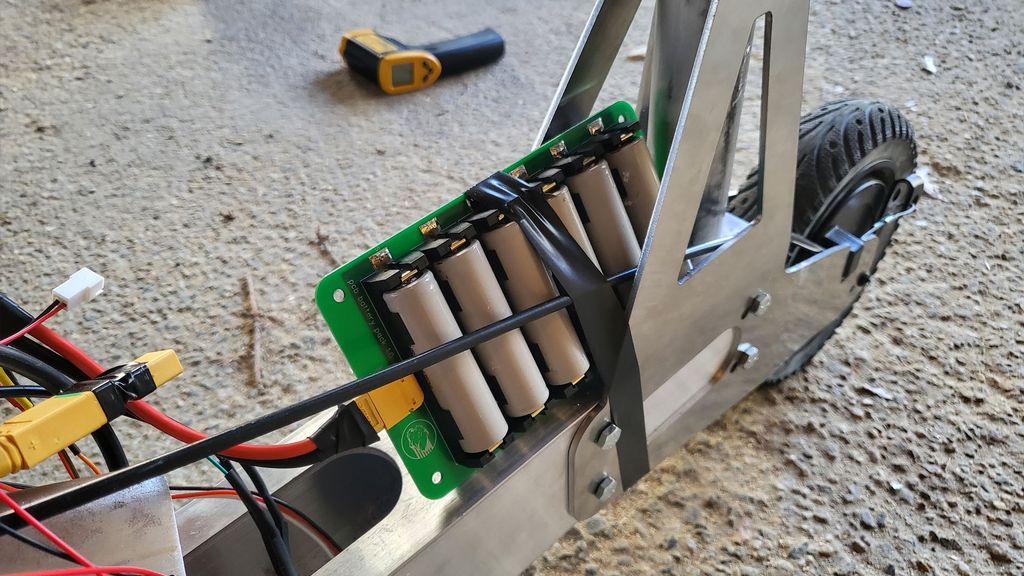
The lithium cells provided more power and offered lower voltage sag under high loads.
The Reality of Sodium Ion
So what’s the over-under? Well, sodium-ion is mostly cheap. Another thing I didn’t mention is that it has a good cycle life. These lithium Molicel units have a rating of around 500 cycles before they degrade to roughly 80% capacity. That’s the price you pay for big power. The sodium cells can do more like 3,000 cycles before that degradation occurs. I think a sodium-ion cell with more power density—which I know exists—would be good for hybrid cars or grid storage, where their poor energy density in terms of weight and volume isn’t as important. For hybrids, cycle life and power density are key.
In a nutshell, sodium-ion has yet to see its full potential in a transportation context, but the cost-benefit is huge. The whole scooter battery pack cost me just $18.24 in cells. That’s a great deal, especially considering the stock Honda Motocompacto battery costs more than $300. It has 5x the capacity, sure, but an equivalent sodium bank would still be under $100, and there’s plenty of room in the compacto’s body to store batteries.
Aren’t batteries fun? I love batteries.
Read the full article here


